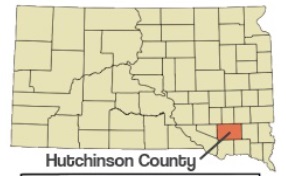Chislic, South Dakota's Iconic Dish
John Hoellwarth, a German Russian from the Crimea region,
brought the dish with him when he immigrated to Hutchinson County in the 1870s,
Show world globe and have John travel from Crimea Region to
Hutchinson County South Dakota in 1870. Land and over the ocean on boat path.
Not flight.
According to historical records. It is unclear why
Hoellwarth and not the hundreds of other German Russian immigrants is credited
with bringing chislic to South Dakota.
The term chislic most likely derives from the Turkic word
shashlyk or shashlik. The Russian dish features cubes of skewered meat grilled
over an open fire.
The origin of the word shashlik is rooted in shish kebab,
the Turkish and Arabic words for skewered meats.
Once arriving to South Dakota most became farmers. show crop
and animal farmers To celebrate their harvest; a group of farmers would
slaughter their oldest sheep (show old sheep; also known as Mutton. They would
cube it, fry it and share that dish with their fellow neighbors.
Some historians say a town of Freeman in Hutchinson County,
is considered the chislic capital of America. It's the center of what's
sometimes called the "Chislic Circle," an area that includes Sioux
Falls South Dakota. Show this animated
map.
It wasn’t until the 1930s that chislic began to gain
regional notoriety. It was unclear who started selling chislic in Freeman
first. Some locals say it was a local entrepreneur Jake Huber, Reno
Huber's distant relative, was the first to sell chislic. In the 1930s and '40s,
Huber operated a chislic stand on hot
summer Saturday nights. Nearby
farm families would come to town for shopping and socializing. Others argue that Albert Krieger deserves the
credit for Freeman's chislic tradition. show another white man animation show
his name and year it took place. Regardless of who started it, Freeman quickly entered a
chislic boom that spread to the surrounding communities.
Chislic didn’t officially hit the Sioux Falls scene until
the winter of 1961. The newly opened Pit Club ran an advertisement in the Jan.
27, 1961, Argus Leader stating, “The Pit offers the delicious Chislic. A
new-comer to Sioux Falls; If you have never tried it…you’re in for a
treat!” A recipe for chislic under the Russian name
"shashlik" first appeared in the Argus Leader 12 years earlier on
Feb. 27, 1949, in an article about Moscow night life. The article featured small pieces of lamb
well done.
Over time, regional differences developed for how to prepare
and serve chislic. It can be grilled, fried, skewered, eaten with toothpicks,
marinated, salted and more. In Freeman
South Dakota, chislic is traditionally lamb cooked on a skewer. In Sioux Falls, it is more common to see the half-inch
chunks of chislic served in a basket with toothpicks as your utensil, rather
than on a stick. Chefs and consumers are less picky when it comes to the meat.
Lamb is often substituted with beef or venison.
Traditionally, lamb chislic is fried, salted, and served
with soda crackers. Some say it goes down well with a cold beer. Nowadays,
chislic is served in a variety ways including marinated and with special
dipping sauces.
In recognition of its long regional history and growing
popularity, the SD legislature passed Senate Bill 96 this week, designating
chislic the official state nosh, an old German word meaning snack.
